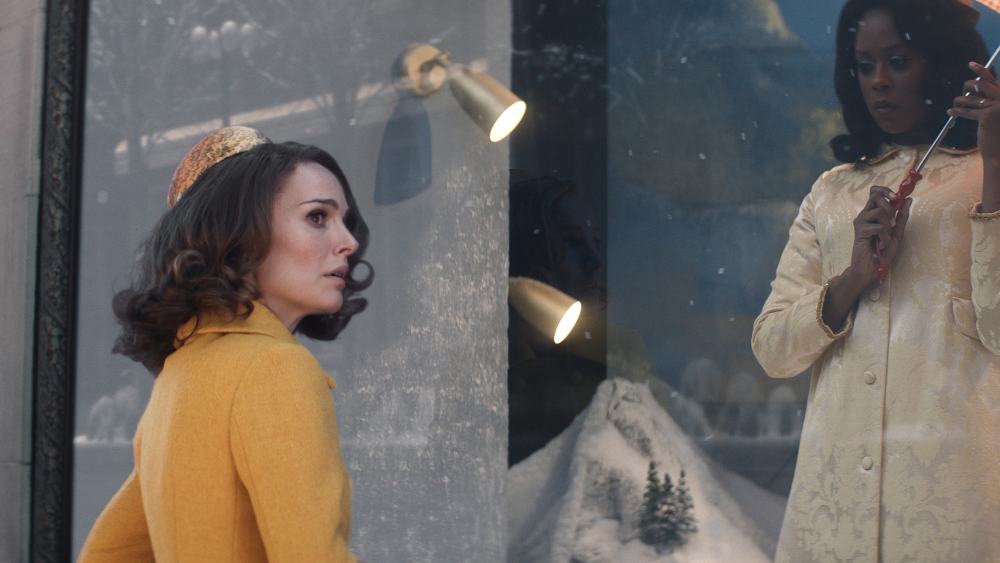Entertainment
Apple TV+’s mystery thriller is bizarre

Based on the novel by Laura Lippman and adapted for television by Alma Har’el, ‘Lady in the Lake’ on Apple TV+ is a story about women’s ambition, and what happens when those ambitions are rejected. The series is set in Baltimore, Maryland in 1966 and revolves around two women. Maddie Schwartz (Natalie Portman) is a Jewish housewife and mother desperately trying to escape her monotonous existence and pursue her lifelong goal: becoming a journalist. On the other side of town, Cleo Johnson (Moses Ingram), a young black mother, is determined to create a better life for her two sons. However, while her husband Slappy (Byron Bowers) searches for his comedic dreams, Cleo is relegated to working as a department store window model, bartending, and keeping the books for prolific gangster Shell Gordon (Wood Harris). Although the women initially lead parallel lives, their worlds collide on Thanksgiving Day. Despite intriguing characters and settings, ‘Lady in the Lake’ never becomes the noir thriller it could have been. Har’el buries the story in enigmatic surreal moments. Consequently, Ingram’s Cleo is positioned as a bystander in her own story, allowing Portman’s Maddie to emerge as insufferable and obnoxious, achieving her goals at any cost.
‘Lady in the Lake’ opens with a gruesome crime. After watching the Thanksgiving Day Parade, a girl goes missing, prompting the community to take action. Excluded from the search and frustrated by her own laziness, Maddie snaps. In the midst of her outburst, she packs a suitcase, abandons her husband Milton (Brett Gelman) and her teenage son Seth (Noah Jupe) and moves to The Bottom, Baltimore’s black neighborhood. Fixated on proving herself, Maddie joins the search party and discovers the girl’s body in the lake. She then uses her “heroism” as leverage to talk her way into the newsroom of The Baltimore Star newspaper.
While Maddie is busy building her career, Cleo struggles to keep her head above water. Needing to earn more money, she takes on a new role under Shell Gordon, which subsequently leads to her downfall. Strengthened by her work at the newspaper and her living space in The Bottom, Maddie decides to use Cleo’s death to continue advancing in her career, but things don’t go quite as she expected. While Portman and the entire cast are excellent actors, Maddie is exhausting. She’s so obsessed with centering herself and finding her way that she never considers how her presence as a white, middle-class woman upends The Bottom’s ecosystem, literally endangering its black residents. As a result, when the full extent of Maddie’s past is revealed, the audience is forced to bend and stretch to sympathize with her.
“Lady in the Lake” is frustrating because it has a powerful story behind it. Yet Har’el forces the viewer to sift through dizzying and unnecessary exposition and extraneous sequences. Episode 6, “I Know Who Killed Cleo Johnson,” is a baffling and derailed segment. Throughout the 45-minute running time, viewers walk alongside Maddie through an overlong dream sequence. While JC Molina’s production design is vibrant, the textures and colors of Shiona Turini’s costumes shimmer, and the hair and makeup of Jose Zamora and Claudia Humburg respectively are fantastic, little is said here. Eliminating this episode would have made for a much sharper series overall.
Unfortunately, the surreal bits of the show that find their way into the story choke the mystery out of the story. The drama works like two detailed tapestries, stitched together in the final hour to create a complete picture. Because the limited series contains countless details, the audience is forced to examine too much at once, creating a state of delirium instead of the pulsating tone of a nail-biter.
Throughout time, women have paid a price for following their ambitions, especially in the eras before the women’s rights movement. In ‘Lady in the Lake’, Maddie and Cleo are determined to get more out of life. Both women contend with rampant misogyny as they navigate their way into new roles, but the series fails to maintain any suspenseful tension. Instead, it simply regurgitates what is already known. Ultimately, racism costs a lot, while privilege (and whiteness) might set you free.
The first two episodes of “Lady in the Lake” will premiere on Apple TV+ on July 19, with new episodes released weekly on Fridays.











